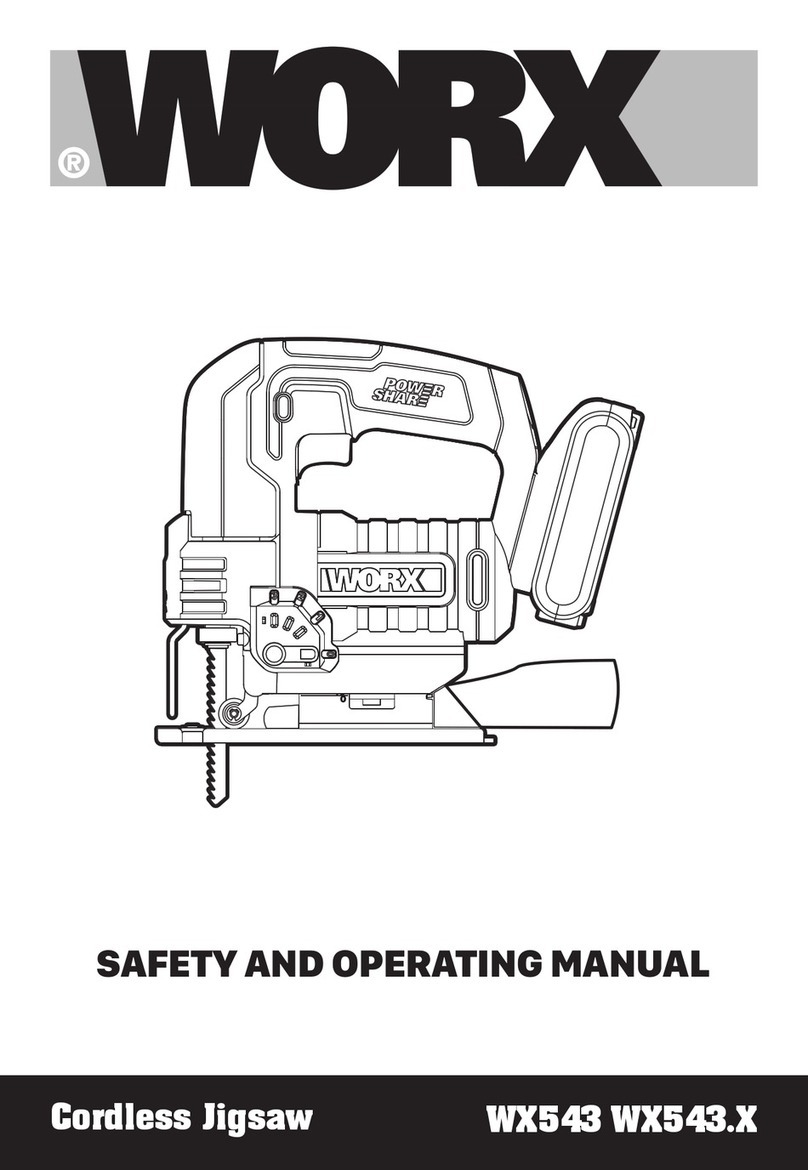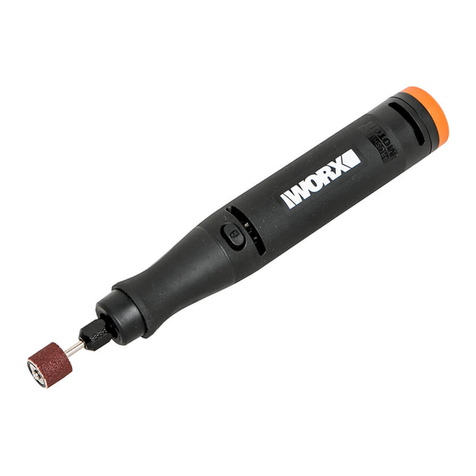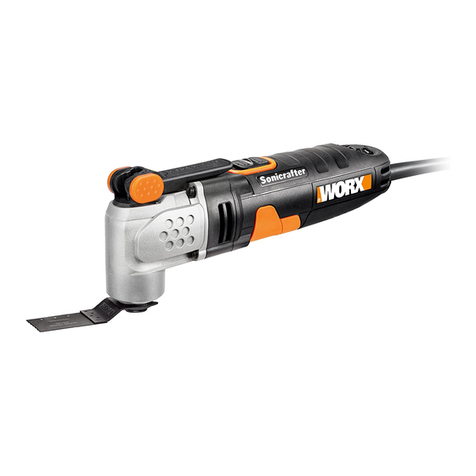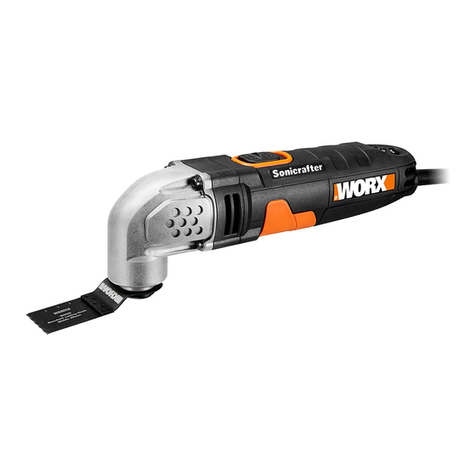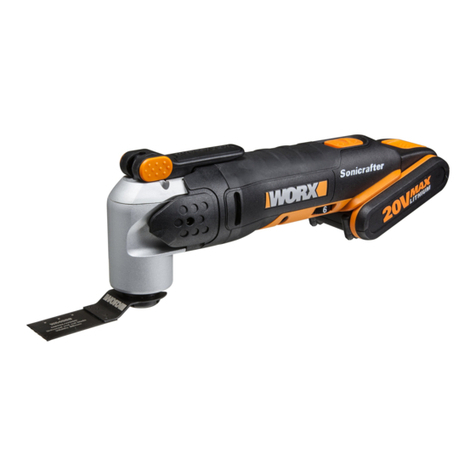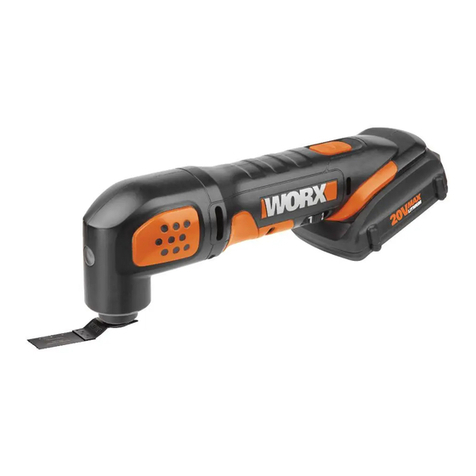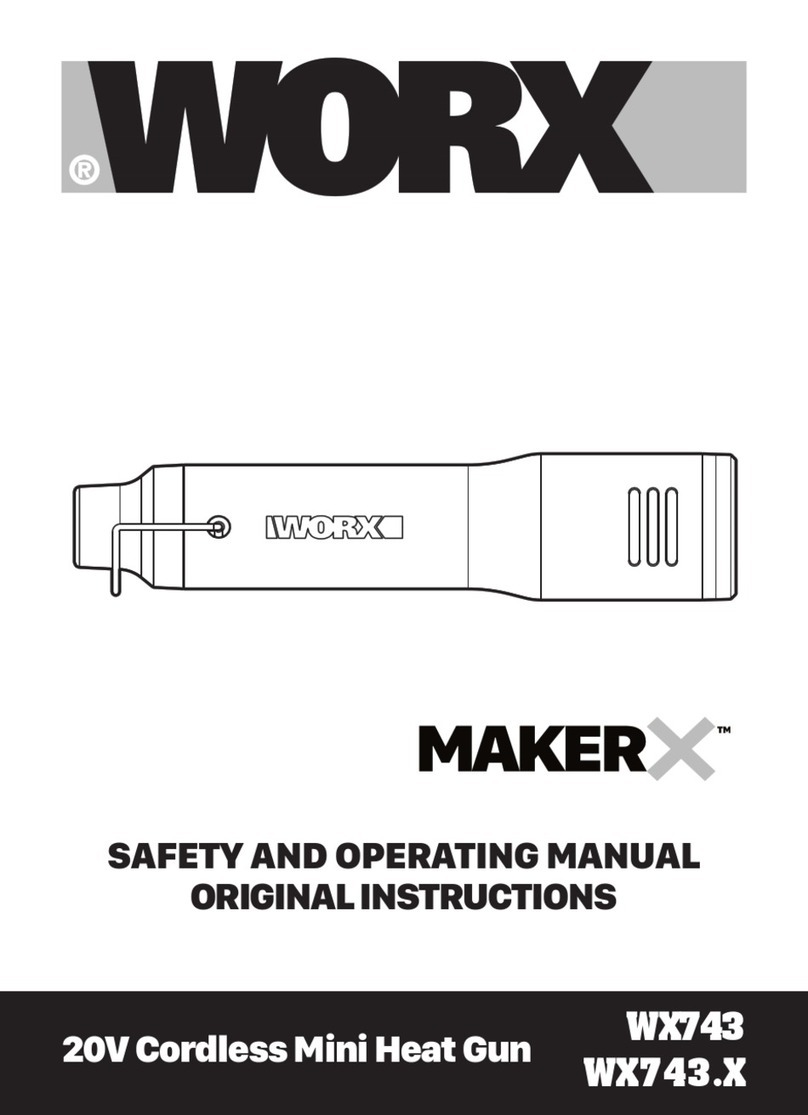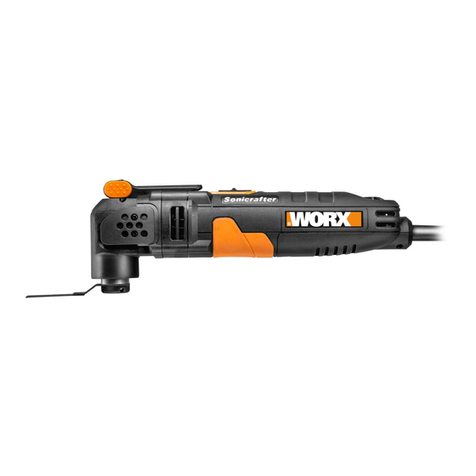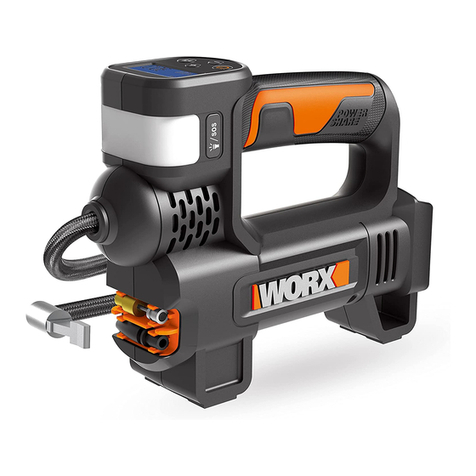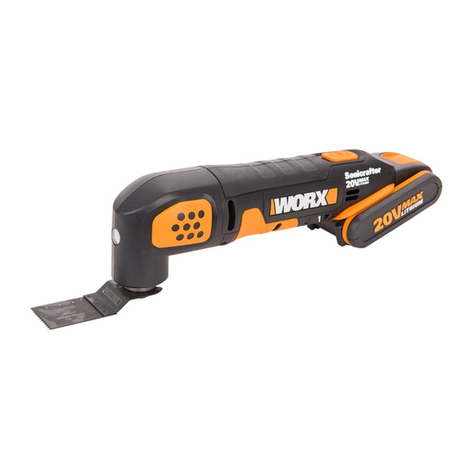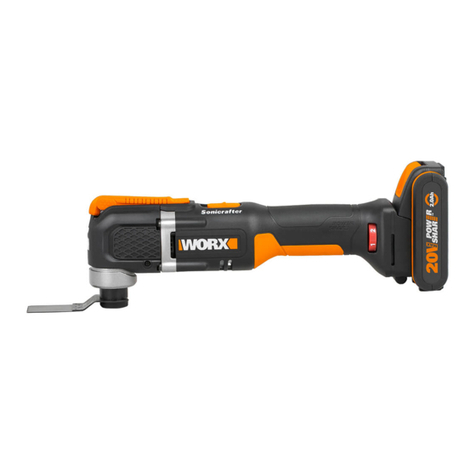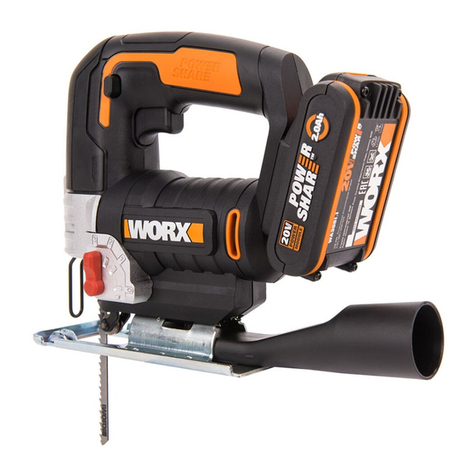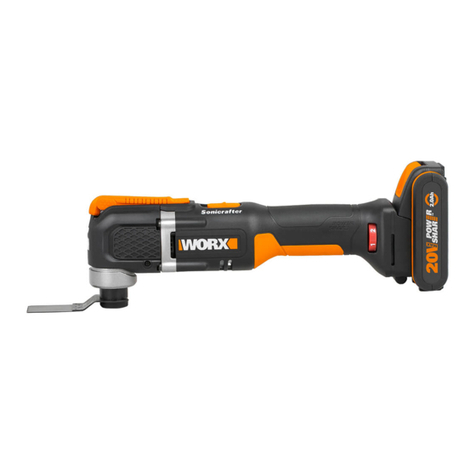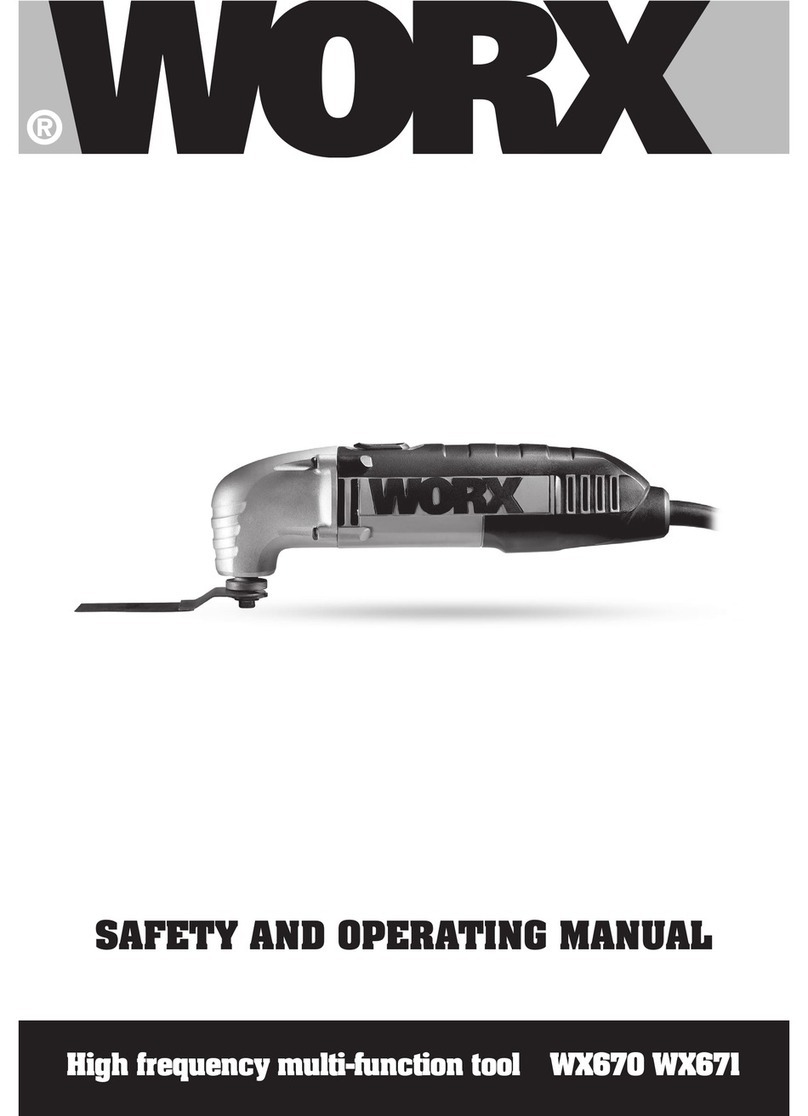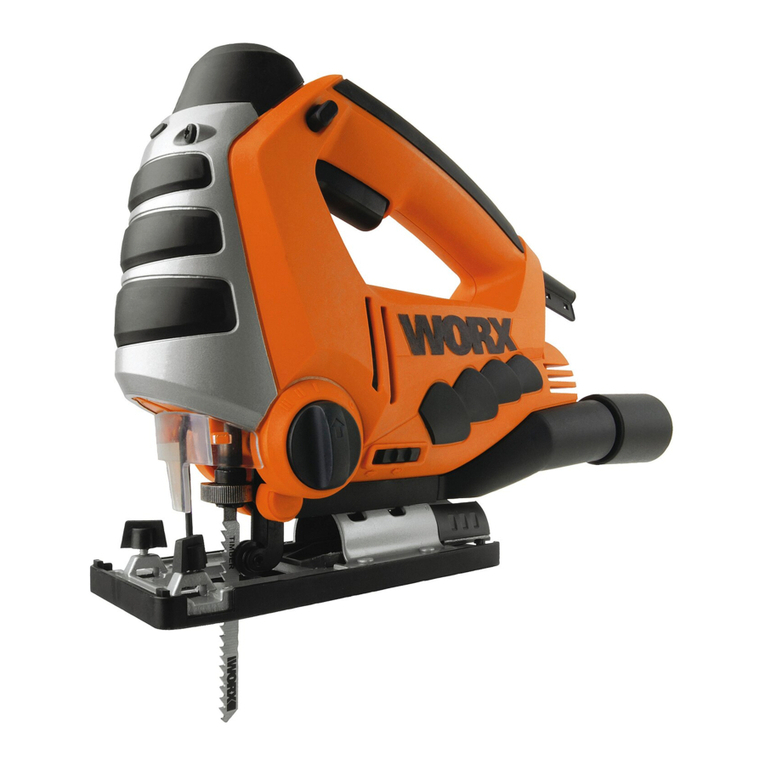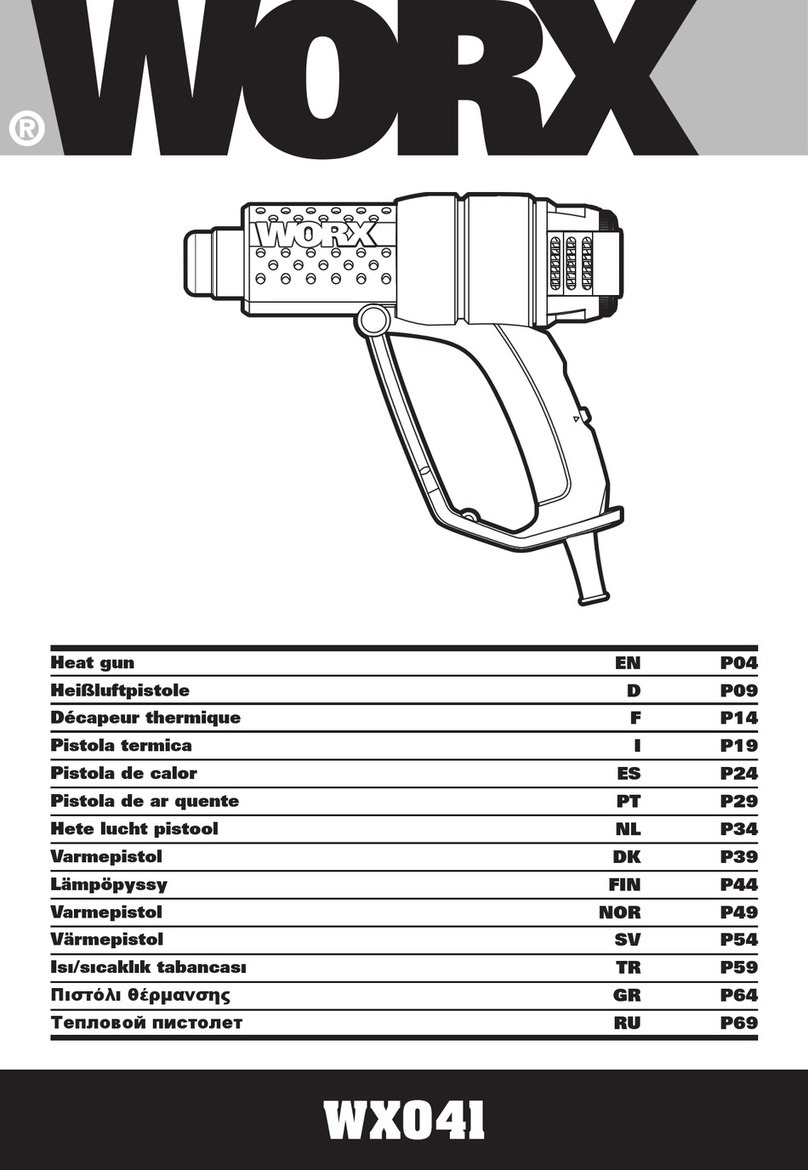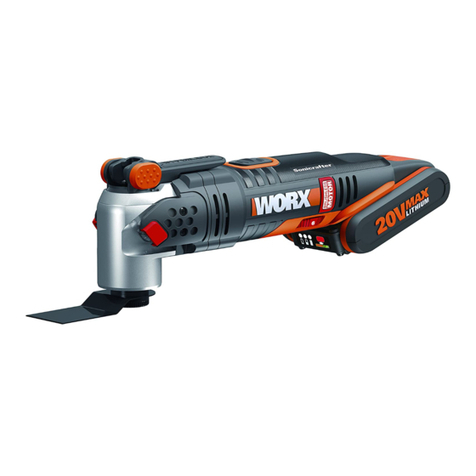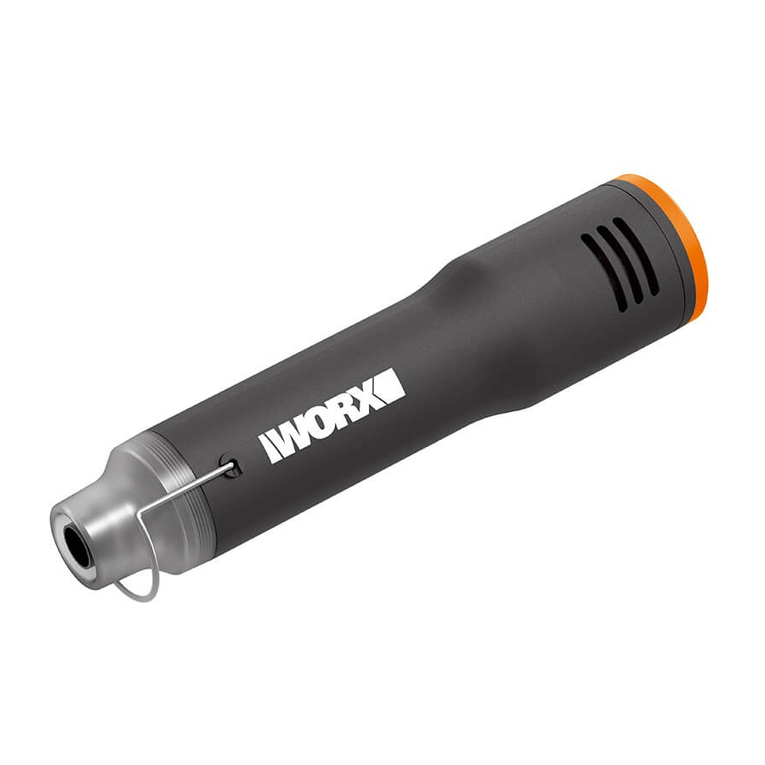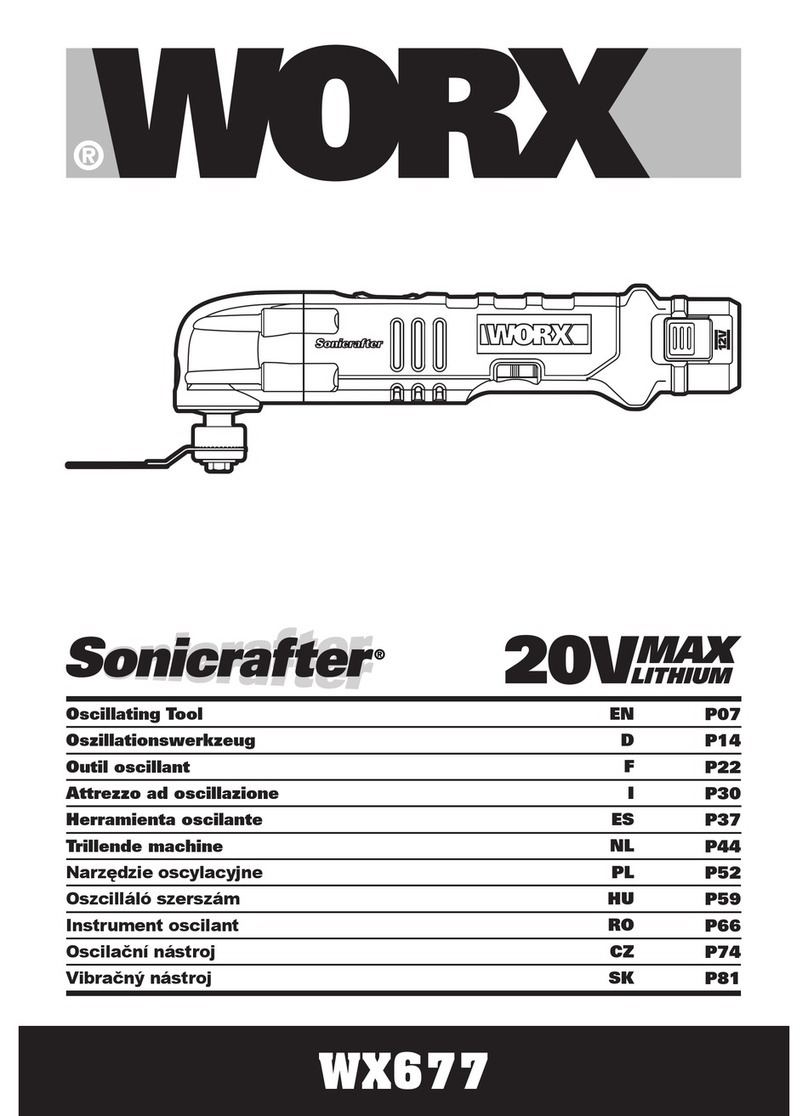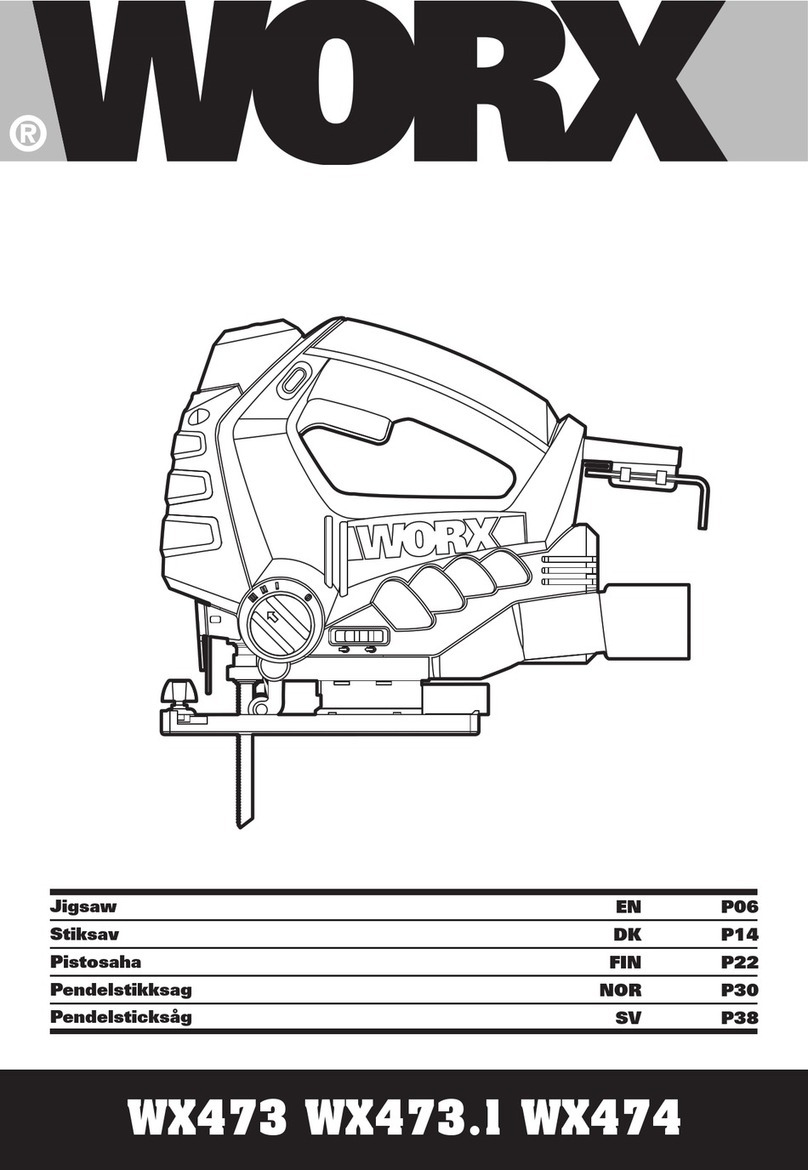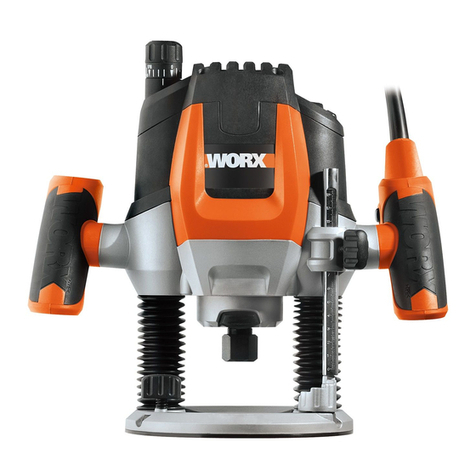
High frequency multi-function tool EN
9
SAFETY INSTRUCTIONS
FOR BATTERY PACK
a) Do not dismantle, open or shred
secondary cells or battery pack.
b) Do not expose cells or battery pack to heat
or fire. Avoid storage in direct sunlight.
c) Do not short-circuit a cell or a battery
pack. Do not store cells or battery pack
haphazardly in a box or drawer where
they may short-circuit each other or be
short-circuited by other metal objects.
d) Do not remove a cell or battery from its
original battery pack enclosure required
for use.
e) Do not subject cells or battery pack to
mechanical shock.
f) In the event of a cell leaking, do not allow
the liquid to come in contact with the skin
or eyes. If contact has been made, wash
the affected area with copious amounts of
water and seek medical advice.
g) Do not use any charger other than that
specifically provided for use with the
equipment.
h) Observe the plus (+) and minus (–) marks
on the cell, battery and equipment and
ensure correct use.
i) Do not use any cell or battery pack
which is not designed for use with the
equipment.
j) Do not mix cells of different manufacture,
capacity, size or type within a device.
k) Keep cells and battery pack out of the
reach of children.
l) Seek medical advice immediately if a cell
or a battery pack has been swallowed.
m) Always purchase the correct cell or battery
for the equipment.
n) Keep cells and battery pack clean and dry.
o) Wipe the cell or battery pack terminals
with a clean dry cloth if they become dirty.
p) Secondary cells and battery pack need
to be charged before use. Always use
the correct charger and refer to the
manufacturer’s instructions or equipment
manual for proper charging instructions.
q) Do not leave a battery pack on prolonged
charge when not in use.
r) After extended periods of storage, it may
be necessary to charge and discharge
the cells or battery pack several times to
obtain maximum performance.
s) Secondary cells and battery pack give their
best performance when they are operated
at normal room temperature (20 °C ± 5 °C).
t) Retain the original product literature for
future reference.
u) Use only the cell or battery pack in the
application for which it was intended.
v) When possible, remove the battery pack
from the equipment when not in use.
w) Dispose of properly.
